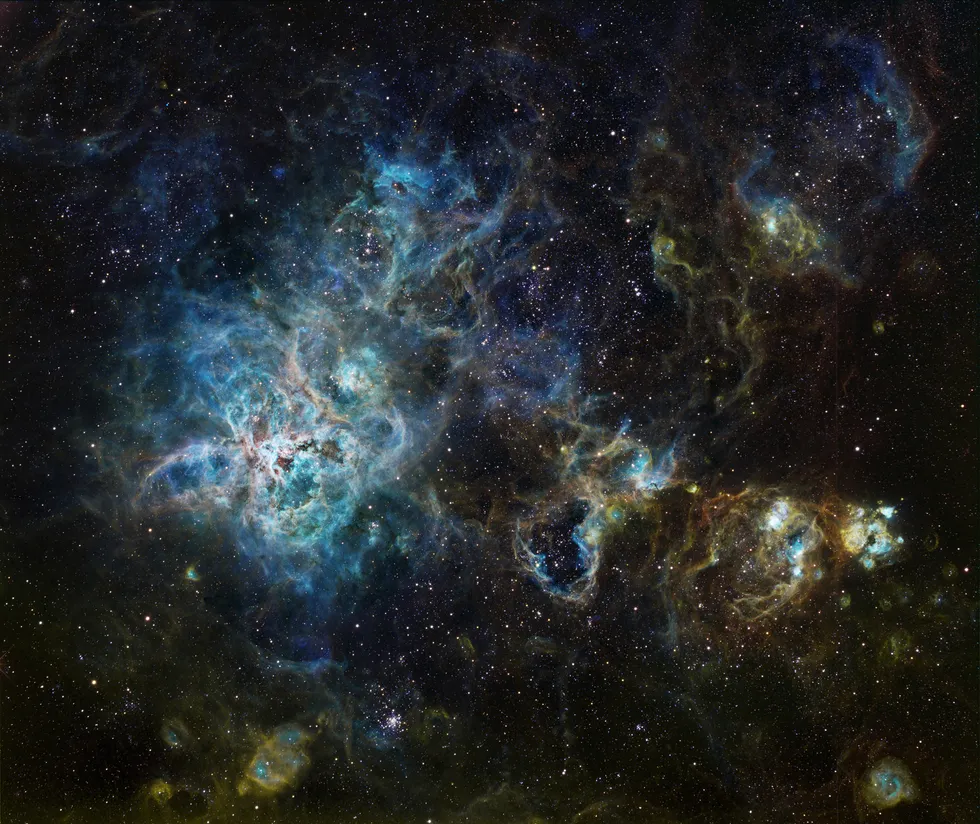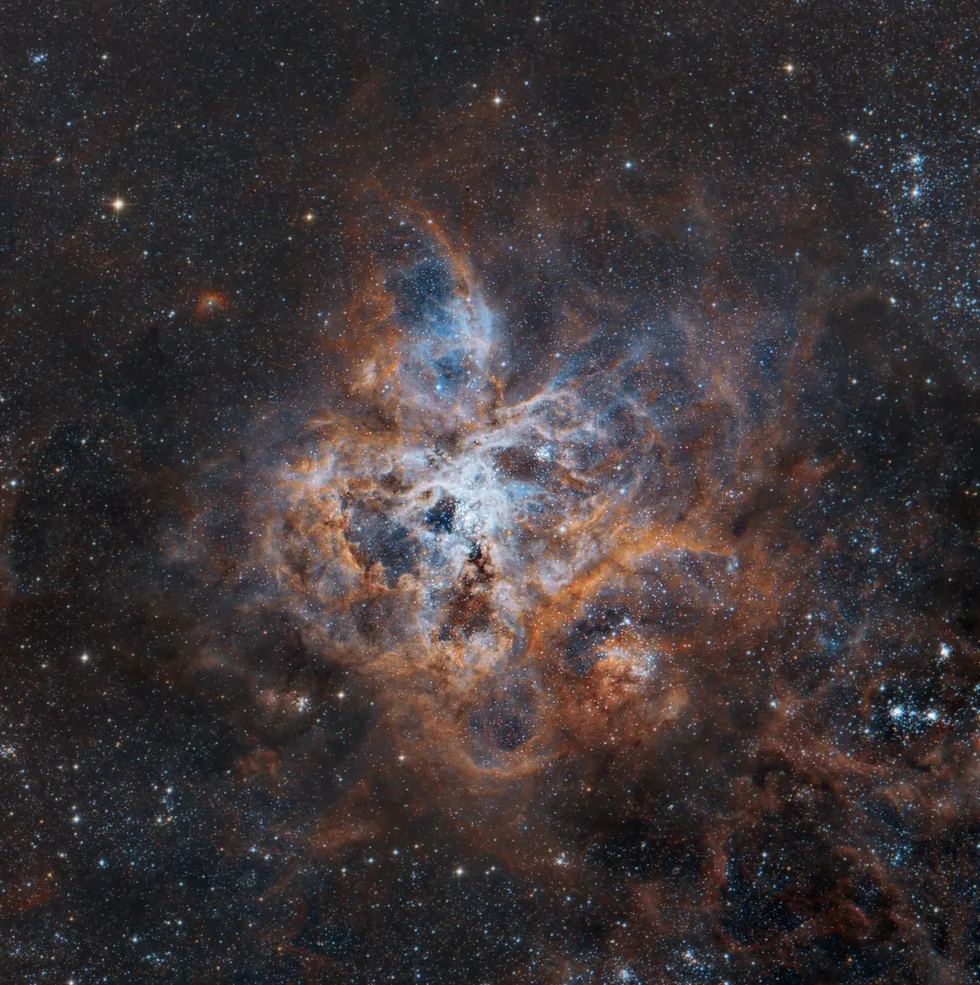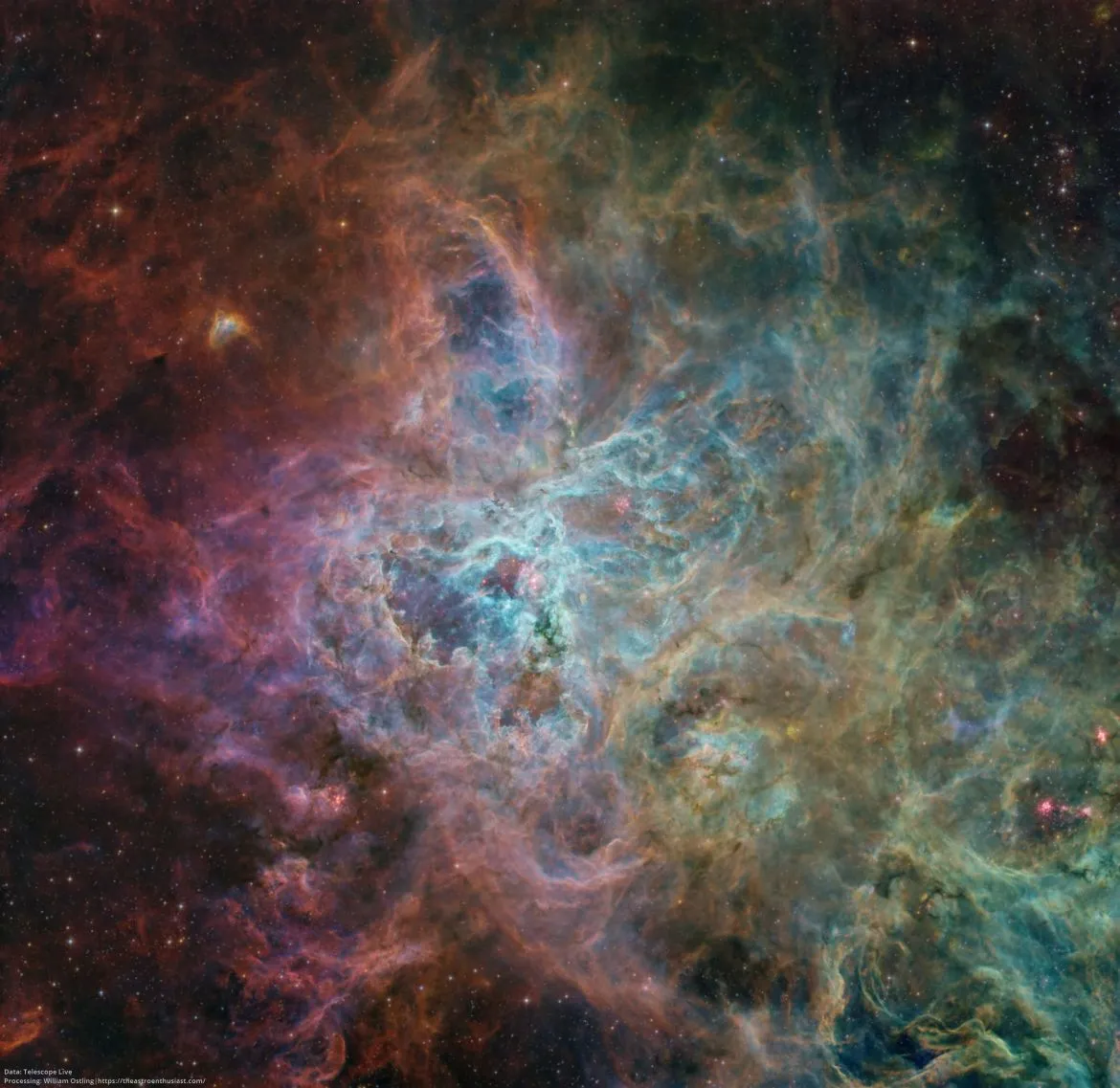What is the Tarantula Nebula?
The Tarantula Nebula, officially known as 30 Doradus, is a vast and stunning emission nebula located in the Large Magellanic Cloud (LMC), a satellite galaxy of the Milky Way. This celestial marvel is a hotbed of star formation, making it one of the most active star-forming regions in our local galactic neighborhood. The nebula’s name comes from its appearance, which, with a little imagination, resembles a giant spider. The Tarantula Nebula is a treasure trove for astronomers, offering invaluable insights into the processes of star birth, stellar evolution, and the dynamics of galaxies. Its complex structure and intense radiation make it a fascinating subject of study, pushing the boundaries of our understanding of the universe.
Location of the Tarantula Nebula
The Tarantula Nebula is located in the Large Magellanic Cloud, which is situated approximately 160,000 light-years away from Earth. The LMC is visible from the Southern Hemisphere and is a relatively close neighbor to our Milky Way galaxy. Its proximity allows astronomers to study the Tarantula Nebula in great detail, revealing intricate structures and processes that would be difficult to observe in more distant galaxies. The nebula is found in the constellation Dorado, and its location within the LMC makes it a key component in understanding the structure and evolution of this satellite galaxy, enriching our understanding of galactic dynamics and the universe’s vastness.
The Size and Scale of the Tarantula Nebula

The Tarantula Nebula is truly immense, spanning approximately 1,000 light-years across. This vast size makes it one of the largest and most active star-forming regions in the Local Group of galaxies. To put this into perspective, if the Tarantula Nebula were as close to us as the Orion Nebula, it would appear to cover a significant portion of the night sky. The sheer scale of the Tarantula Nebula allows for the formation of massive stars and complex stellar structures, providing a unique laboratory for astronomers to study the life cycle of stars and the influence of stellar feedback on the surrounding interstellar medium. The ability to observe such a large structure at relatively close range is a remarkable opportunity for astronomical research.
Star Formation in the Tarantula Nebula
The Tarantula Nebula is a stellar nursery, teeming with the birth of new stars. The nebula’s vast clouds of gas and dust collapse under gravity, forming protostars that eventually ignite nuclear fusion, becoming stars. The intense radiation and stellar winds from these newly formed stars sculpt the surrounding nebula, creating intricate structures and triggering further star formation. The Tarantula Nebula is home to some of the most massive and luminous stars known, which have a profound impact on the surrounding environment. Studying star formation in this nebula provides crucial insights into the processes that govern the birth and evolution of stars in different galactic environments, furthering our understanding of the stellar life cycle and its role in shaping galaxies.
The R136 Cluster
At the heart of the Tarantula Nebula lies the R136 cluster, a dense concentration of young, massive stars. This stellar cluster is a major source of energy and radiation, driving the nebula’s activity. The R136 cluster contains some of the most massive stars ever observed, with masses exceeding 100 times that of our Sun. These massive stars have a short lifespan, ending their lives in spectacular supernova explosions. The study of the R136 cluster provides insights into the formation and evolution of massive stars, their impact on the surrounding interstellar medium, and the processes that govern the evolution of star clusters within galaxies. Its central position and energetic output make it a key component in understanding the dynamics of the Tarantula Nebula.
Supernova in the Tarantula Nebula

The Tarantula Nebula is a site of frequent supernova activity, as the massive stars within the R136 cluster reach the end of their lives. These supernova explosions release immense amounts of energy, scattering heavy elements into space and enriching the interstellar medium. The remnants of these supernova explosions, such as the supernova remnant SN 1987A, provide valuable opportunities for astronomers to study the physics of stellar death and the processes that lead to the formation of neutron stars and black holes. The ongoing cycle of star formation and supernova explosions within the Tarantula Nebula shapes the nebula’s appearance and influences the evolution of the Large Magellanic Cloud.
Observing the Tarantula Nebula
The Tarantula Nebula is a spectacular object to observe with telescopes, particularly those equipped with advanced imaging capabilities. Its intricate structures, vibrant colors, and active star formation make it a captivating target for both amateur and professional astronomers. The use of filters can enhance the visibility of different elements within the nebula, allowing for a more detailed study of its composition and dynamics. Observing the Tarantula Nebula provides a unique window into the processes of star formation, stellar evolution, and the interaction between stars and the interstellar medium. The advancements in telescope technology and imaging techniques continue to reveal new details about this remarkable cosmic wonder.
In conclusion, the Tarantula Nebula, a beacon of star formation, offers a wealth of information about the universe’s grand design. Its remarkable size, vibrant colors, and active star-forming regions provide crucial insights into the birth and evolution of stars. From its location within the Large Magellanic Cloud to the presence of the R136 cluster and supernova events, the Tarantula Nebula has continually fascinated astronomers. Through ongoing observations and studies, our understanding of the universe continues to deepen, fueled by discoveries within the radiant heart of this cosmic marvel.
